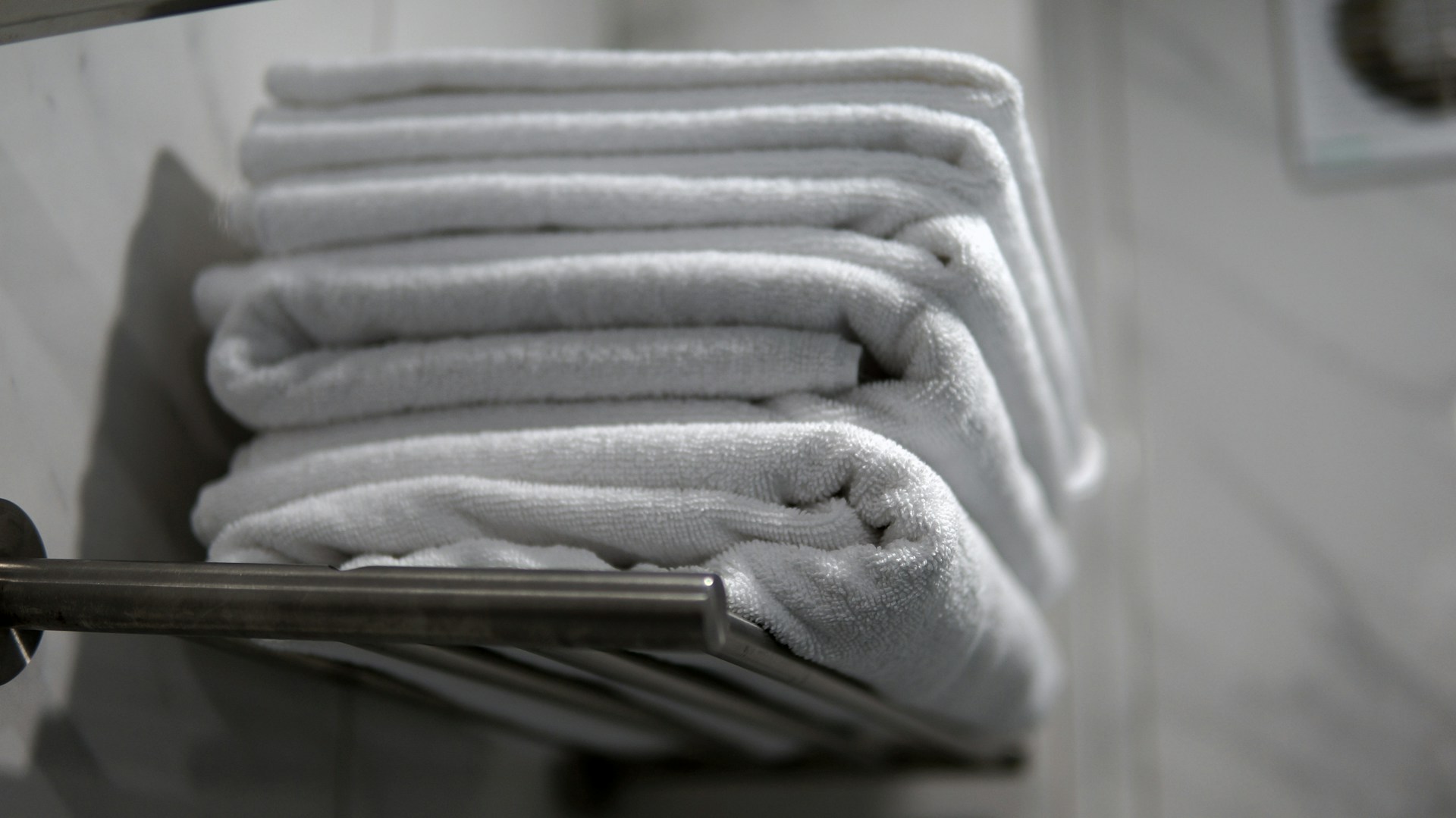
Plush towels and fabric softeners may feel like the ultimate laundry luxury, but they can quietly damage your dryer over time. Many homeowners are unaware that soft, fluffy fabrics and scented dryer sheets contribute to build-up inside the vent system. Left unchecked, this buildup can cause safety hazards, reduce efficiency, and increase your energy bills. In this article, we’ll explore how Plush Towels and dryer vent performance are connected, why fabric softener leaves residue on dryer vent parts, and how to keep your system clean and safe.
What’s the Impact of Fabric Softeners on Dryer Vent?
Fabric softeners and dryer sheets may improve the texture and scent of your laundry, but they come with a downside: residue. The waxy coating these products leave behind accumulates on your dryer’s lint screen and venting system. Over time, this buildup traps moisture and lint, significantly reducing airflow and posing a fire risk. Understanding how Plush residue and dryer vent performance interact can help you make informed laundry decisions.
What is fabric softener?
Fabric softeners are liquid conditioners added to the rinse cycle to make fabrics feel smoother and smell fresher. However, they are made with chemicals and oils that coat fabric fibers—and in the process, also coat the dryer drum and venting system. This buildup isn’t just cosmetic; it can impact dryer performance and airflow, especially if you don’t clean fabric softener off dryer vent areas regularly.
What are dryer sheets?
Dryer sheets are infused with similar softening agents and fragrances. As they tumble with your laundry, these substances transfer to both the clothing and interior components of your dryer. The result is Plush residue on dryer vent surfaces that restrict airflow and can increase the likelihood of static build-up and overheating.
Is fabric softener harmful to towels?
Yes, especially plush towels. Over time, softeners reduce towel absorbency by coating fibers in a waxy film. They may feel fluffier, but they become less functional and contribute more lint to the vent system. This lint, when combined with Plush residue on dryer vent parts, creates a thick, sticky blockage that’s difficult to clean and dangerous if ignored.

Effects of Static Electricity in the Drying Process
Drying plush items like towels can also generate significant static. The friction between soft fibers and the dry air in the drum leads to Static Electricity in dryer vent components. This static charge attracts lint and dust particles, encouraging them to cling to vent walls instead of passing through the filter. The result is increased residue, lower efficiency, and even a risk of electrical discharge or overheating.
If you’re noticing more static cling than usual or feel a small shock when removing clothes, it may indicate a blocked or malfunctioning vent. These signs warrant immediate inspection or professional cleaning.
Symptoms of a Blocked or Contaminated Dryer Vent
A dryer vent affected by plush fabrics and softeners doesn’t just cause slow drying—it can also lead to serious safety issues. Look out for these signs:
- Clothes taking longer to dry. This is often the first indicator. A blocked vent restricts airflow, meaning the dryer can’t efficiently remove moisture.
- Burning smell during operation. Trapped lint and residue near heating elements can cause a faint burning odour—a clear fire risk.
- Excess lint behind the dryer. If lint is escaping, it may mean your vent is clogged and air is being forced out of other areas.
- Increased heat or hot exterior. The dryer becomes hotter than usual as it struggles to release hot, moist air.
- Visible residue around the vent opening. A waxy or dusty coating indicates residue buildup from dryer sheets and fabric softener.
Keep Your Dryer Vent Safe and Clean
If your dryer machine shows any of these symptoms, it’s time to act. Schedule a cleaning with a trusted dryer vent cleaning company to ensure your dryer runs safely. For larger machines, opt for professional commercial dryer vent cleaning to address a cloggage. Residential users can also benefit from dryer vent cleaning services to improve the efficiency of your dryer machine.
Keeping your bath towels soft and fluffy without damaging your dryer or reducing absorbency is entirely possible with a few simple adjustments. Avoiding commercial fabric softeners helps preserve both your towels and your dryer vent system, especially if you’re dealing with Plush Towels and dryer vent buildup. These gentle methods maintain towel quality without the side effects of residue and static.
Here are effective ways to maintain towel softness:
- Use White Vinegar in the Rinse Cycle. Add ½ cup of white vinegar during the rinse cycle. It breaks down detergent residue and naturally softens fabric.
- Dry with Wool Dryer Balls. These reusable balls fluff towels while reducing drying time and static, without leaving behind Plush residue on dryer vent components.
- Shake Towels Before Drying. Give towels a quick shake after washing to loosen fibres and improve air circulation during drying.
- Don’t Over-Dry. Overheating can stiffen towel fibres. Use a medium heat setting and remove towels while slightly damp for air-drying.
- Wash with Baking Soda. Add ¼ cup of baking soda to your wash to boost detergent efficiency and soften fibres.
Substitutes for Fabric Softener
To clean fabric softener off dryer vent and avoid future buildup, replacing traditional softeners with natural or mechanical alternatives is a smart move. These options protect both your laundry and your appliances.
Try these safe and effective fabric softener substitutes:
- White Vinegar. Acts as a natural softener and detergent booster, keeping towels fresh and fluffy.
- Baking Soda. Softens water and helps break down mineral and detergent deposits that cause stiffness.
- Epsom Salt Softening Mix. Combine Epsom salt with a few drops of essential oil for a fragrant, chemical-free alternative.
- Reusable Wool Dryer Balls. Bounce through the dryer with your laundry to separate fabrics, reduce static, and soften naturally.
- Aluminum Foil Balls. Roll foil into balls and toss into the dryer to reduce Static Electricity in dryer vent systems without leaving any coating behind.
- Tennis Balls (for drying only). These can help fluff towels when used sparingly, though not as durable or effective as wool dryer balls.
By switching to these alternatives, you reduce Plush residue and dryer vent issues while preserving towel quality—and help extend the life of your dryer.

Alternatives for Drying Towels
While using a dryer is convenient, it’s not the only way to dry towels effectively. Especially if you’re concerned about Plush residue and dryer vent buildup, exploring alternative drying methods can help reduce wear on your appliance and extend the life of your towels. These methods also help minimize the risk of Static Electricity in dryer vent systems and improve energy efficiency.
Consider these alternatives for drying towels:
- Air Drying on a Clothesline. Hanging towels outside allows natural air and sunlight to dry them gently. Sunlight also helps eliminate bacteria and odours.
- Indoor Drying Racks. A good choice during colder months or in apartments. Use a dehumidifier or open window nearby to speed up drying.
- Heated Towel Rails. These are energy-efficient and ideal for keeping towels warm and dry in the bathroom, reducing humidity and mold growth.
- Ceiling or Wall-Mounted Dryers. These save space and offer even drying, especially useful for multiple towels at once.
- Combination Air + Fan Drying. Set up a fan in a ventilated room to circulate air around hanging towels for faster drying without heat.
- Spin Cycle Boost. Use an extra spin cycle in the washer to remove more water before drying, cutting down overall drying time regardless of the method used.
By incorporating these approaches, you can avoid dryer overuse, maintain towel quality, and reduce the need for frequent professional commercial dryer vent cleaning.
Summarizing the Results
The connection between Plush Towels and dryer vent maintenance is more significant than most realize. While fabric softeners and dryer sheets add fragrance and softness, they also leave behind residue that can clog vents and reduce dryer efficiency. The good news is that with simple adjustments—like switching to natural softeners, adopting safer drying techniques, and staying vigilant with maintenance—you can prevent issues like fabric softener leaves residue on dryer vent and Plush residue on dryer vent systems.
For lasting results and household safety, consider scheduling routine inspections with an air duct and dryer vent cleaning company and taking advantage of dryer vent cleaning services when needed. Whether you’re trying to clean fabric softener off dryer vent parts or reduce static-related risks, these strategies will help ensure your towels stay fluffy—and your dryer stays efficient and safe.



